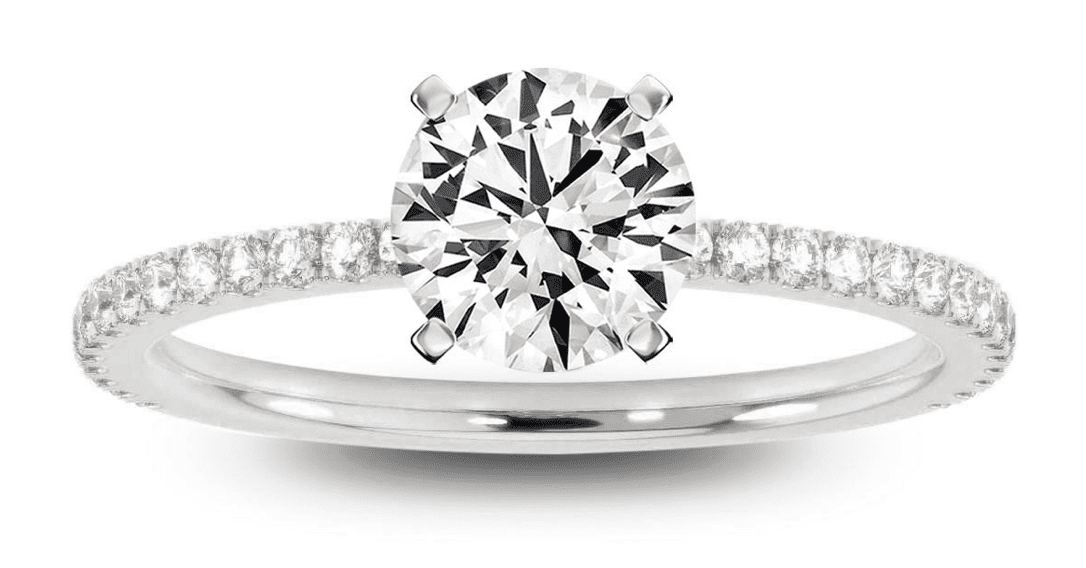Understanding Pave Diamonds and the Clarity Scale | Rare Carat
Where Do Pave Settings Come From?
The road to success is paved with … diamonds? The Pave style of diamond setting is a technique that has been used for hundreds of years to add lots of sparkle to jewelry. Pave (from the French word for “paved”) is a setting style that allows for many diamonds to be placed closely together and lay flat on the metal, giving the impression that the surface is actually paved with gemstones. To accomplish this, small holes are drilled into the mounting in which diamonds are prong-set with minimal amounts of metal. This technique can be used to fill in a single line, fit together in a honeycomb pattern, or surround larger diamonds to create a halo. Thus, the pave technique can be used decorate a simple silhouette or create a bold design that may stand on its own such as was particularly popular in the 1980’s. Frequently, the stones used in pave settings weigh less than 0.20 carats, which are classified as “melee” stones.
Types of Pave Settings
Depending on the size of the diamonds used, and how the holes in the mounting are drilled, there are several sub-categories of pave settings that you should be aware of.
Regular Pave:
Stones are set individually with bead prongs to hold them securely against the mounting.

Petit pave:
Similar to regular pave except that the prongs are constructed using the smallest quantity of metal possible for smaller stones. This enhances the “paved” effect by eliminating much of the metal that would otherwise be used.

Micro pave:
This design utilizes minute stones, some as small as 0.001 carats, to create the effect of a highly sparkly blanket shimmering across the surface of a piece.

French pave:
This describes the shape of the drill hole in the metal rather than the prongs. A deep, V-shaped gap is created to allow for more light to enter the stone and to increase how much of the diamond may be seen from the side view.

Scalloped pave:
Closely related to the French pave, scalloped pave describes a more U-shaped gap in the metal.

What Clarity Grade Should a Pave Setting Have?
Since the whole point of pave settings is to encourage the eye to see the wider surface of a piece, rather than focusing on the smaller details of each of the individual stones, the clarity of the stones used, particularly the melee stones, are far less important than their color. So, in an effort to keep prices down, many jewelers will opt for stones that have either a SI (slightly included) or I (included) clarity grade. You won’t see the difference, but your bank account will!
What do I Need to Know about Pave?
Clearly, one of the great advantages of pave setting is its versatility. It creates a beautiful, and highly vibrant effect which may be used as sparingly or liberally as desired. However, because there is space between stones (and those spaces are very small and sheltered), cleaning may be difficult as grime can become trapped. As a result, it is a good idea to remove rings if you are planning to use your hands to do something that involves anything sticky or dusty. Also crucial to keep in mind, rings that feature long rows of pave-set stones, including eternity bands, can be difficult, if not impossible, to size. Bending the shape of a ring to change its size will put stress on all of the settings and can cause stones to fall out. Be sure that a ring with lots of pave-set stones down the band fits you properly before you buy it.

